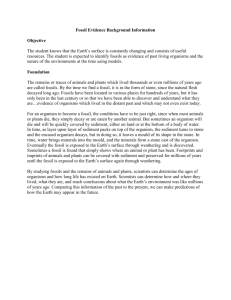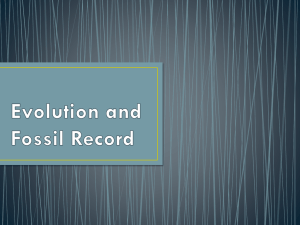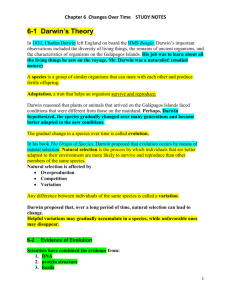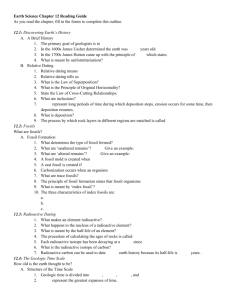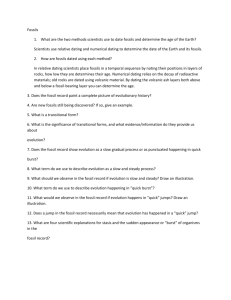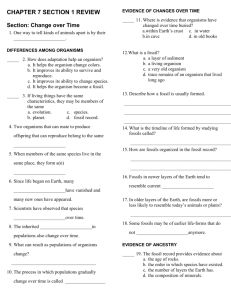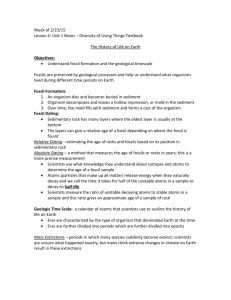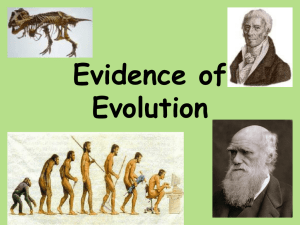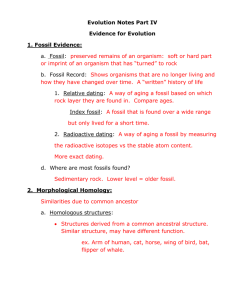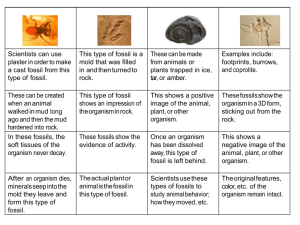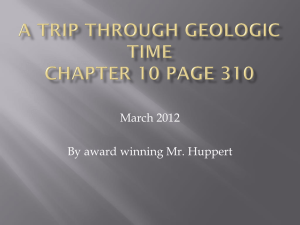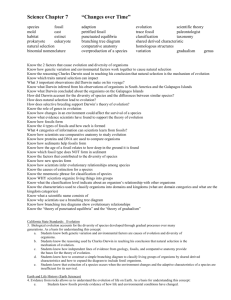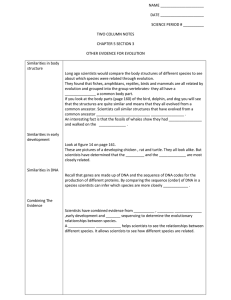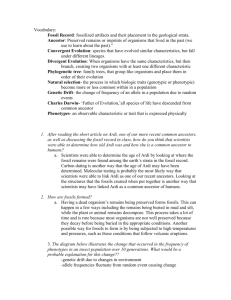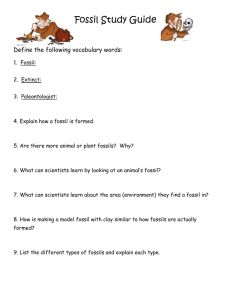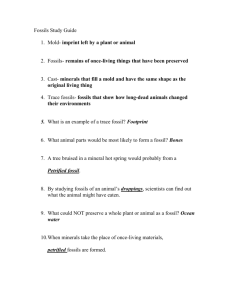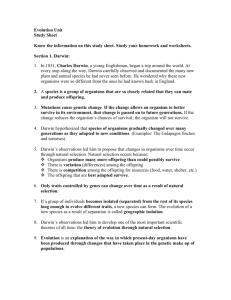Changes Over Time Study Guide Ch
advertisement
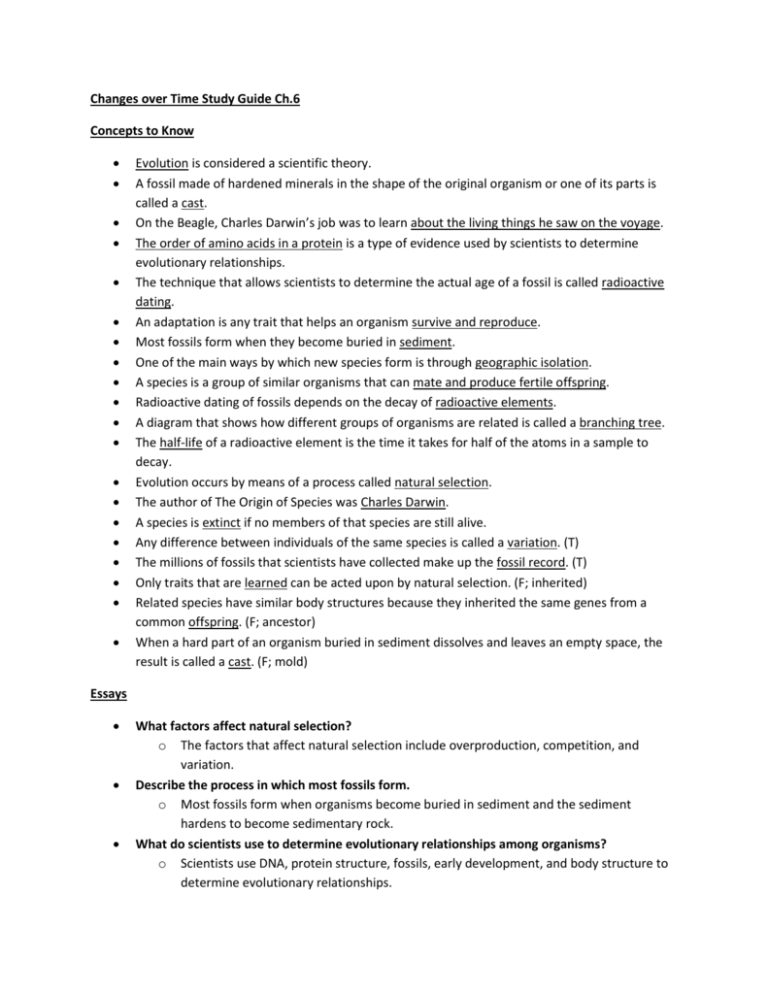
Changes over Time Study Guide Ch.6 Concepts to Know Evolution is considered a scientific theory. A fossil made of hardened minerals in the shape of the original organism or one of its parts is called a cast. On the Beagle, Charles Darwin’s job was to learn about the living things he saw on the voyage. The order of amino acids in a protein is a type of evidence used by scientists to determine evolutionary relationships. The technique that allows scientists to determine the actual age of a fossil is called radioactive dating. An adaptation is any trait that helps an organism survive and reproduce. Most fossils form when they become buried in sediment. One of the main ways by which new species form is through geographic isolation. A species is a group of similar organisms that can mate and produce fertile offspring. Radioactive dating of fossils depends on the decay of radioactive elements. A diagram that shows how different groups of organisms are related is called a branching tree. The half-life of a radioactive element is the time it takes for half of the atoms in a sample to decay. Evolution occurs by means of a process called natural selection. The author of The Origin of Species was Charles Darwin. A species is extinct if no members of that species are still alive. Any difference between individuals of the same species is called a variation. (T) The millions of fossils that scientists have collected make up the fossil record. (T) Only traits that are learned can be acted upon by natural selection. (F; inherited) Related species have similar body structures because they inherited the same genes from a common offspring. (F; ancestor) When a hard part of an organism buried in sediment dissolves and leaves an empty space, the result is called a cast. (F; mold) Essays What factors affect natural selection? o The factors that affect natural selection include overproduction, competition, and variation. Describe the process in which most fossils form. o Most fossils form when organisms become buried in sediment and the sediment hardens to become sedimentary rock. What do scientists use to determine evolutionary relationships among organisms? o Scientists use DNA, protein structure, fossils, early development, and body structure to determine evolutionary relationships. A continent pulls apart, and the parts become separated by an ocean. How could this event affect the species of organism that populated the original continent? o Geographic isolation is one of the main ways that new species form. A continent pulling apart would isolate different groups of a species. Different conditions on the new continents might result in the formation of new species. Scientists find a fossil of one type of fish in a rock layer near the bottom of a canyon. They find a fossil of another type of fish in a rock layer near the top of the canyon. Which fossil is probably older? Explain how you know, and identify the kind of dating you are using. o Through relative dating, scientists can infer that the fossil fish in the layer near the bottom of a canyon is older because the lower the rock layer, the older it is. Compare and contrast the theories of gradualism and punctuated equilibria. o Both theories are proposed explanations for the rate at which evolution occurs. Gradualism proposes that evolution occurs slowly but steadily. Small changes in a species accumulate, eventually resulting in major changes. In contrast, the theory of punctuated equilibria maintains that species evolve rapidly during relatively short periods. These periods of rapid change are separated by long times in which little change occurs.
